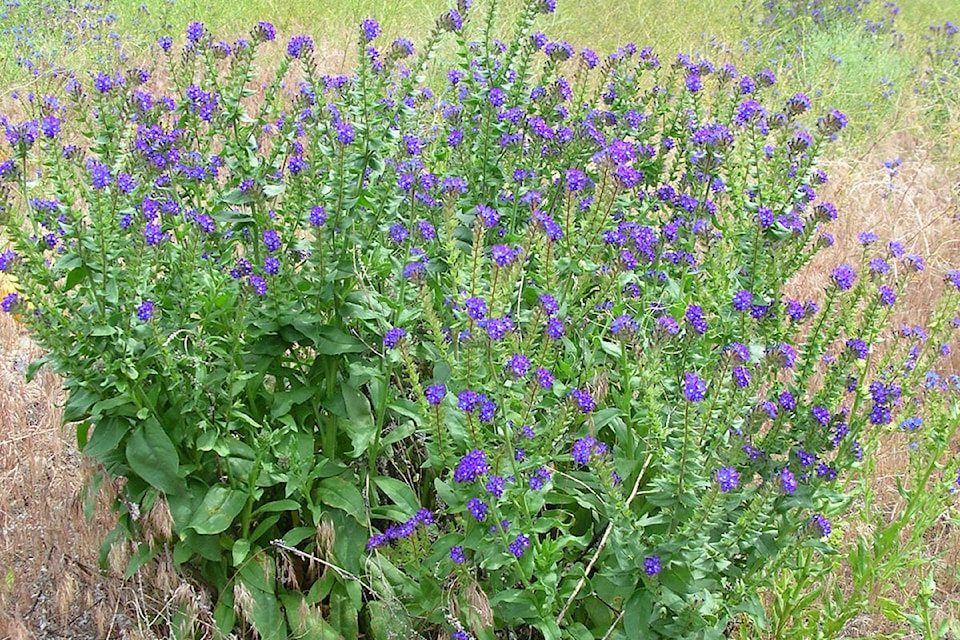Invasive plant species are on the rise in Kitimat.
That’s the short version of a 2019 invasive plant management (IPM) report presented to the District of Kitimat at their April 6 meeting detailing the state of invasive species in the region.
From 2018 to 2019 the total area of all infestations was estimated at 9.67 hectares, up from 7.20 in 2018.
The report identified 30 species within the District, from the most popular Common tansy (2.21 hectares) all the way down to two singular plots of both yellow iris and tartary buckwheat that had taken up roots.
The report to council also highlighted treatment actions taken by the District. In previous conversations the District had opted to try for as much non-chemical removal as possible, due to public concerns about the use of herbicides, particularly the known carcinogen glyphosate.
READ MORE: Invasive plants in the crosshairs in Kitimat
To that point, six different treatments — five physical and one chemical — were performed over the last year. The largest includes 21 sites (still amounting to only 0.01 hectares) of Policeman’s helmet which were dug up.
The one plant which was chemically treated, Japanese knotweed, was done so out of necessity as herbicide is the only known treatment to minimize its spread.
In their report to staff the Northwest Invasive Plant Council (NWIPC) noted this preference for mechanical removal versus chemical, while possible, would be costly in the long-term.
“The NWIPC considers the 2019 contribution of $9,523.81 to be adequate for the 2019 work,” they said in their report to the District. “However, increasing the amount of mechanical treatments (in place of chemical treatments) will cost the District more in the long run as the sites mechanically treated may remain established, albeit smaller, over a longer time.”
For councillors this information caused mixed reactions, with Coun. Mario Feldhoff suggesting the District shouldn’t discriminate with regard to using chemical treatments, adding they could not mechanically move all the presently-invasive species for the amount they’ve budgeted.
“Going forward I don’t think we should be too restrictive in terms of the methods used,” he said, adding that eradicating things like the tansy manually would be near impossible under the current budget.
“I think they did a good job focusing on the mechanical and the removal, but going forward I think they need to get in greater latitudes if we’re going to make significant headway on some of these other invasive plants at the budget levels that we put forward,” said Feldhoff.
Councillor Lani Gibson disagreed.
“I along with others in the communities do have communities with the spraying of glyphosate,” she said. “I would like to see what we can do on the education front before we would change the direction that we gave last year around reserving the chemical spray for the japanese knotweed.”
Gibson said her hope was that with a successful education campaign they can see results in the community without solely relying on contractors for removal, adding that learning about invasive species has been an eye-opener for her.
“I considered myself a fairly knowledgeable gardener but it wasn’t until I was on council and saw this agenda item last year not until then did I realize how many invasive species I had on my own property and I’m now taking measures — non chemical measures — to address [them],” she said.
“I think there’s the basis here with this list for some fantastic public education just with simple photos as we’ve talked about before.”
In 2019 the budget for invasive plant management in the District was just over $9,500.
trevor.hewitt@interior-news.com
Like us on Facebook and follow us on Twitter
